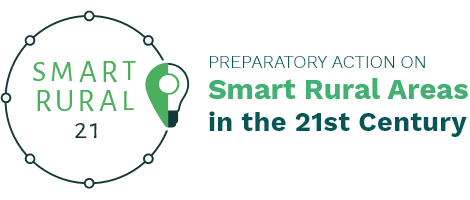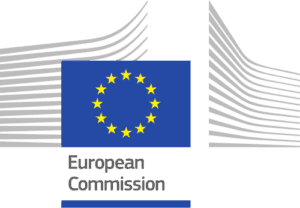Smart Solutions
Green Railways
Rehabilitating former railway infrastructure to create a network of hiking and cycling trails.
Implemented in : Valmiera
Country : Latvia
What’s the solution?
The green railways initiative renovates and adapts disused railway lines to make them usable by the general public as hiking and cycling routes.
This includes work to ensure that the ground is clear of obstacles, including physical objects (e.g. leftover railway infrastructure) or overgrowing vegetation to ensure it is passable by people walking, cycling or – in winter – cross-country skiing.
It also involves the installation of wooden bridges and railings, as well as route markings along the path to make the former tracks suitable and safe for non-motorised traffic of different kinds.
The basic infrastructure of the routes is complemented by the creation of recreation areas and installation of rest benches and improvement of former railway infrastructure facilities along the path to provide areas to rest and enjoy. The solution also includes the installation of pedestrian and bicycle meters, which count the number of railway visitors.
What makes it smart?
The solution is smart because
- The solution was implemented in cooperation with several municipalities and organisations;
- The solution was implemented using the former railway line infrastructure in Vidzeme region and Southern Estonia;
- The solution can be used all year round (regardless of the season).

How is the solution implemented?
- Identify the suitable stretch of abandoned railway line to be restored.
- Engage local authorities and relevant NGOs with the idea of a ‘green railway’ for use by walkers and cyclists.
- Map the total length of the railway and engage local authorities and partners in other municipalities and – potentially – in other countries where relevant.
- Search for funding support to restore the railways.
- Use the local authorities and NGOs to mobilise as many volunteers as possible to help with the physical interventions.
- Contract professional builders for the installation of necessary bridges, railings and signs.
In what local context has it been applied?
The municipality of Valmiera covers an area of nearly 3 000 square kilometres in the northwestern part of the Vidzeme region in northern Latvia, on the border with Estonia. The municipal capital is 107 km from the capital city Riga.
Historically, the economic development of the settlement was facilitated by its location on the trade routes of Pskov and Terbata-Novgorod and in the 14th-16th centuries Valmiera was part of the Hanseatic League.
The railway line Ainaži—Valmiera—Smiltene was a 114 km long 750 mm narrow-gauge railway line that connected the port of Ainaži with Valmiera station and continued to Smiltene. It was originally used in particular to transport freight including firewood, stones, coal, artificial manure, butter and potatoes. In 1928, there was built a special motorcar for passenger transportation. However, many railway facilities were damaged in the second world war and afterwards, the range of transported goods narrowed and passengers increasingly used bus services.
From 1970 to 2000, the railway line was gradually eliminated in stages as it was taken over by a foreign company which did not find the rail operations profitable. The Valmiera-Smiltene section of rail was closed in 1970, the Ainaži-Pāle section in 1977, the Staicele-Pāle-Puikule section and the Dauguli-Valmiera section in 1979 and the last section Puikule-Dauguli was closed in 2000, when it stopped being used by the Zilākalnas peat factory. The rails and metal bridges were dismantled and removed for scrap metal
Despite its abandonment, there is still a generation living in the area that experienced a time when the narrow-gauge railway was running in the local area and they have memories and sadness at the same time,
Most of the railway embankment had become privately owned and, in many places, the railway line had started to become overgrown with vegetation.
Who was behind the implementation?
- Vidzeme Tourism Association
- Various (25) Local governments of the Vidzeme region and Southern Estonia
- Latvian Green Roads Association
What was the local journey?
- The idea of the project was borrowed from other European countries.In total, 16 Vidzeme and 8 Southern Estonia municipalities and organisations cooperated in the project.
- The whole "Green Railways" project envisaged the arrangement of the infrastructure of the former lines in Vidzeme and Southern Estonia, creating a total of approximately 750 km of shared bicycle/pedestrian routes, most of which follow the former railway lines.
- It started by preparing and coordinating efforts to clear the old railway tracks of vegetation. This required a lot of preparatory work to agree the interventions foreseen with the landowners.
- Agreements were drawn up and signed with more than 40 landowners that the local government and NGOs could clean and mow the railway embankment regularly and that there would be movement along it. Such coordination with landowners was necessary, as most of the railway embankment had become privately owned.
- Once the agreements were in place, the local authorities and NGOs organised teams of supervised volunteers to carry out the physical interventions, restoring the clear and flat surface of the former railway line and their suitability for non-motorised transport.
- Builders were contracted for the more technical interventions, including the construction of bridges and installation of signs, railings and rest benches.
- In the 32 km of railway covered by this local smart solution (part of the route Valmiera-Kocēni-Ainaži), 7 bridges had to be rebuilt, from the supports to the deck. The bridges were designed and constructed for use by cyclists and pedestrians.
What have been the main outputs & results?
- Locals quickly found that the cleared and restored railway lines are a great place for walks, bike rides and – in the local context - a unique ski track during the snowy winter months.
- The development of the green railways has also been able to attract an increased number of tourists to the area – including during all seasons of the year whether for walking and cycling in the summer or cross-country skiing in the winter.
- The local routes are also part of a much larger routed which crosses the Vidzeme region and into Southern Estonia, creating a total of approximately 750 km of joint cycling / walking routes, most of which run along the former railway lines.
What does it bring the village/community?
- The higher influx of tourists provides new economic opportunities in the area. For example, groups of cyclists regularly stop in villages near the railway to dine and see some of the cultural and historical sites
- Development of new products and services - outlets, accommodation.
- More opportunities for locals to go walking and cycling creating healthier and happier local communities.
- Wider mobility opportunities.
What’s needed
Financial resources
Main types of cost:
Financial needs:
Set up / Investment costs: 47 000 EUR (calculated on the basis of 4% of the total cost of the larger project along 750 km which cost 1 174 938 EUR).
Funding received:
| Source | Amount | Funded |
|---|---|---|
| Interreg Estonia-Latvia European Regional Development Fund | 40,000 € | Physical restoration work and construction of railings, bridges, signs, benches (4% of total contribution across 750km). |
| Other partners | 7,000 € | Physical restoration work and construction of railings, bridges, signs, benches (4% of total contribution across 750km). |
Human resources
• Local people - volunteers.
• Local NGOs.
• Municipal employees.
• Builders.
Physical resources
● Disused former railway lines
What to do…
- Careful explanatory work is needed to obtain agreement with landowners.
- Use volunteers for the manual – but non-expert work.
- Use professional builders wherever necessary.
- Engage partners along the entire length of the railway.
and not to do
- Don’t start intervening without the agreement of all local authorities and landowners.
- Don’t be limited by administrative boundaries.

